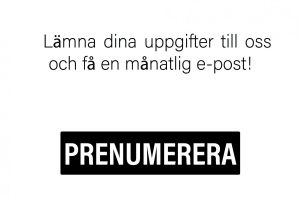Payne, J., & Piquero, A. (2020). Developmental Criminology and the Crime Decline: A Comparative Analysis of the Criminal Careers of Two New South Wales Birth Cohorts (Elements in Criminology). Cambridge: Cambridge University Press. doi:10.1017/9781108882149
Responding to crime and fear in public places. Towards an agenda for research and practice. In V. N. Ceccato, M. K. (Eds.) (Ed.), Crime and Fear in Public Places: Towards Safe, Inclusive and Sustainable Cities (pp. 460-467), London: Routledge.
Safety in the making. An assessment of urban planners’ practices in municipalities in Sweden. In V. N.Ceccato, M. K. (Eds.) (Ed.), Crime and Fear in Public Places: Towards Safe, Inclusive and Sustainable Cities (pp. 428-443), London: Routledge.
Evaluating harm-reduction initiatives in a night-time economy and music festival context. In V. N.Ceccato, M. K. (Eds.) (Ed.), Crime and Fear in Public Places: Towards Safe, Inclusive and Sustainable Cities (pp. 389-405), London: Routledge.
Fieldwork protocol as a safety inventory tool in public places, Criminal Justice Studies, 32:2, 165-188, DOI: 10.1080/09589236.2019.1601367
“Apps on the street” En ny tids vakande ögon. Samhällsbyggandet som mysterium – Jane Jacobs idéer om människor, städer och ekonomier.
Eyes and Apps on the Streets: From Surveillance to Sousveillance Using Smartphones. Criminal Justice Review
Crime and Control in the Digital Era. Criminal Justice Review Do crime hot spots affect housing prices?
Architecture and Deviance in Schools – Implications of a Meta Synthesis of Hotspots in Swedish Schools. Nordisk Arkitekturforskning
Quantifying the geographic (un-)reliability of police data.
Smallest is better? The spatial distribution of arson and the modifiable areal unit problem. Journal of quantitative criminology
Violent crime, collective efficacy and city-centre effects in Malmö. British Journal of Criminology
Assessing safety in parks: a multi-method approach. Review of European studies, 5:1-17.
Hot Spot Policing With Actively Monitored CCTV Cameras: Does it Reduce Assaults in Public Places. International Criminal Justice Review, 26 (2) 187-201.
From ‘defensible space’ to ‘space of flows’: integrating geographical information into urban safety research and planning. Urban design and planning, 166:15-23.
An international perspective of the gender dimension in planning for urban safety. In Ceccato A (Ed.) The urban fabric of crime and fear. New York, Dordrecht, London, Springer.
Space-time Clusters of Crime in Stockholm, Sweden. Review of European studies. 4:148-156
Crime prevention, security and community safety: Using the 5Is framework. Palgrave, Basingstoke.
The impact of crime on apartment prices: evidence from Stockholm, Sweden, Geografiska annaler: Series B, Human Geography, 93: 1–23.
Applying Geostatistical Analysis to Crime Data: Car-Related Thefts in the Baltic States. Geographical Analysis, 42:53–77.
Short and medium-term dynamics and their influence on acquisitive crime rates in the transition states of Estonia, Latvia and Lithuania. Applied Spatial Analysis and Policy,1:1874-4621.
Homicide in São Paulo, Brazil: assessing spatial-temporal and weather variations. Journal of Environmental Psychology, 25:249-360.
Assessing the geography of vandalism: evidence from a Swedish city. Urban Studies, 42:1637-1656.
Tools in the spatial analysis of offenses: evidence from Scandinavian cities. In: GIS for sustainable development, (ed.) M Campagna, Taylor, and Francis, 267-287.
Exploring crime statistics in Stockholm using spatial analysis tools. Annals of the Association of American Geographers,22:29-51.
Dynamics of rural areas: an assessment of cluster of employment in Sweden. Journal of Rural Studies, 18:49-63.
Adapting GIS technology to the needs of local planning. Environment and Planning B, 27: 923-938.
Bli en problemlösande brottsanalytiker i 55 steg. Polishögskolan, Stockholm. (översättning: Johannes Knutsson, Lars Dolmen och Marianne Hilton).

